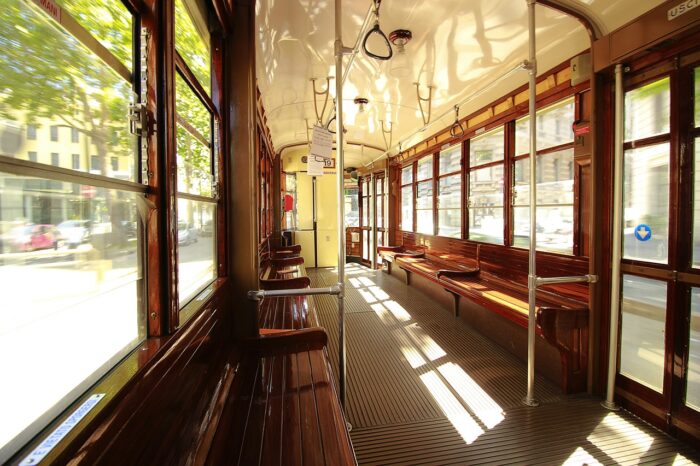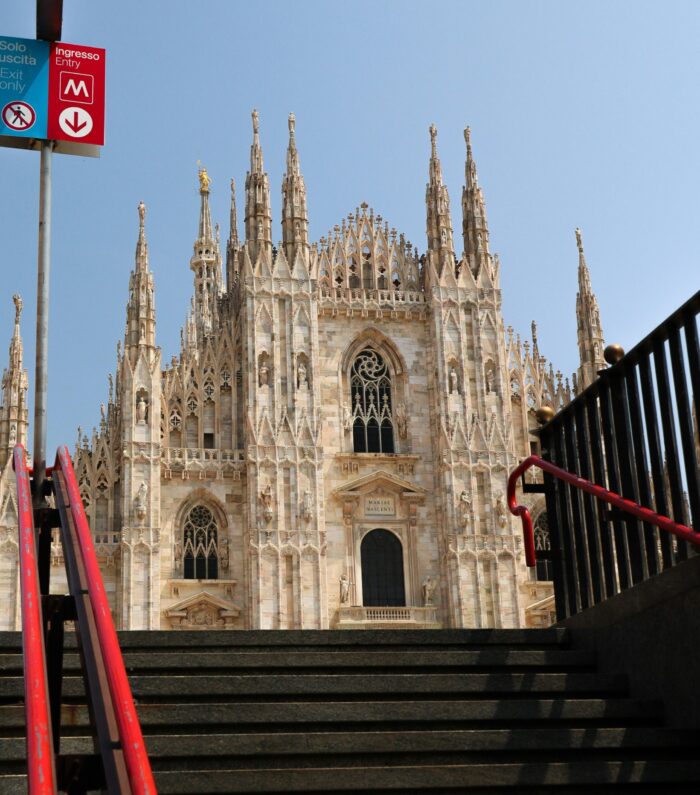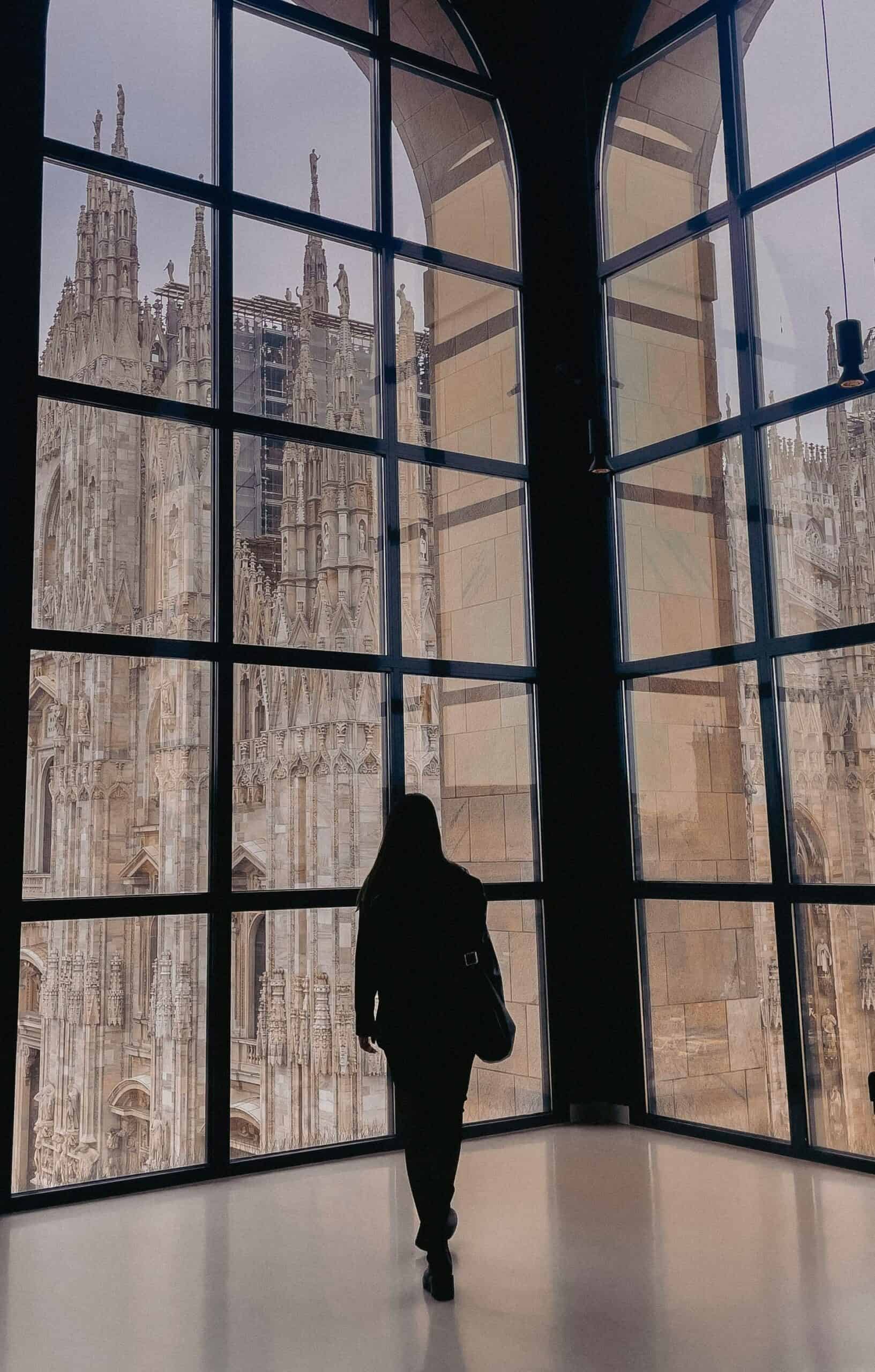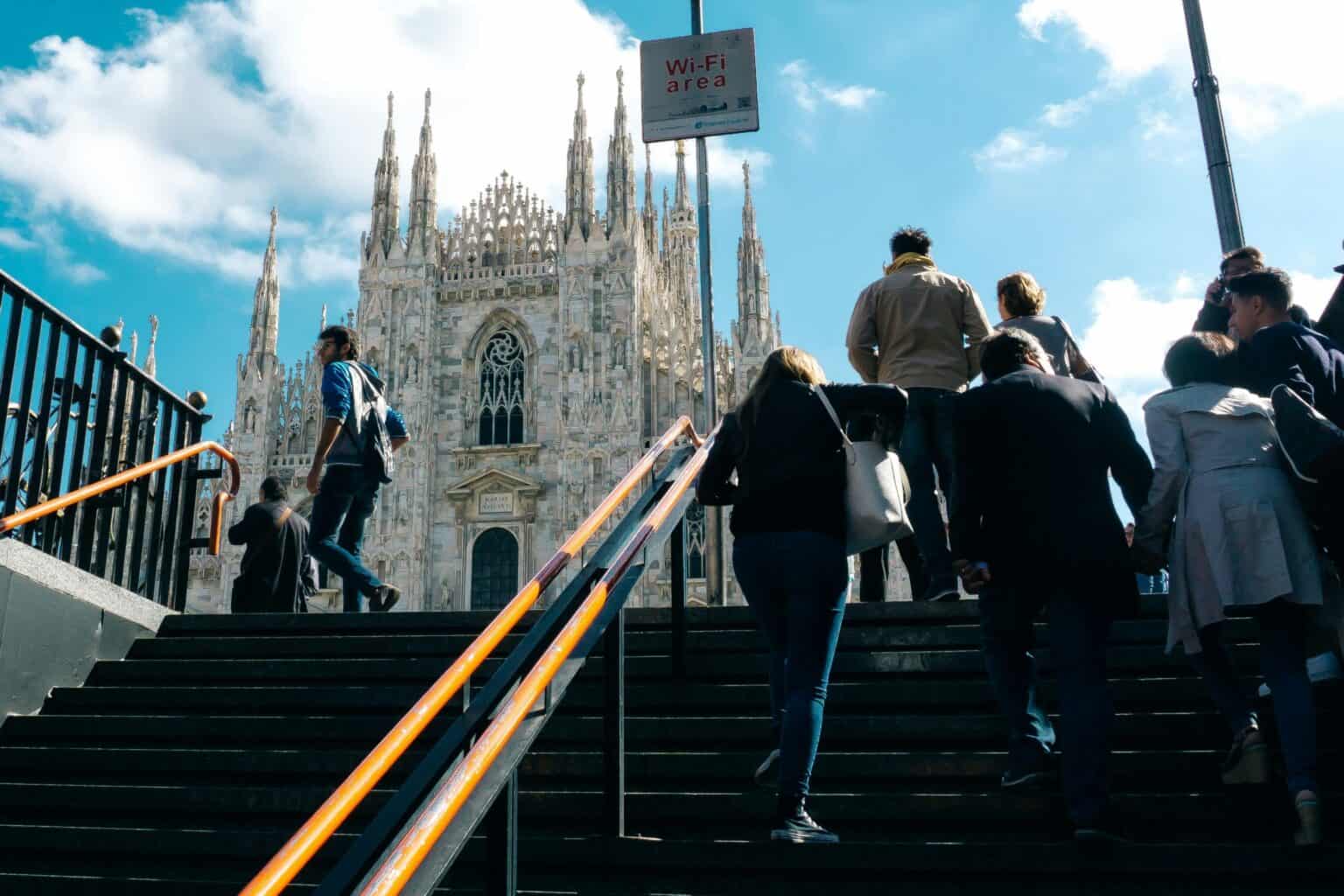Milan’s public transportation system is fantastico.
It’s a model of modern (and Modernist) urban planning in an ancient city.
Read on for the skinny and two of my favourite stops.
Getting around
Public transport is the way to go in Milan. The city’s subway lines, trams, trolleys and buses provide reliable and inexpensive transport all over the city. And everything’s so clean, despite over 800,000 journeys a day!
As easy as 1,2,3
The basic ATM (Azienda Trasporti Milanesi) ticket allows you to travel through the three main zones of the city, Mi1, Mi2, and Mi3, on all types of transport. You can buy tickets at a machine at major stations, tobacconists throughout the city, via the free ATM app, or with a boop of your phone or contactless card.
There are three handy options for travellers. A single-use ticket will set you back €2.20 and is good for 90 minutes of unlimited trips after validation. A better value is the 24-hour ATM ticket, €7.60. Best of all? the 72-hour card, €15.50. Tip: if using contactless payment, make sure you use the use the same card/account throughout each validation.

Validating tickets
On the Metro, scanning your ticket or booping your phone automatically validates your ticket. Keep it handy, you’ll need to scan it again to exit. If you transfer to a bus or tram in your allotted time, scan or boop every time you get on. No need to scan again when exiting.
To validate a paper ticket on buses and trams, look for an orange box.
Tram, bus or Metro?
While the tram is charming for short trips and buses offer reliable air conditioning, my vote is Metro, all the way. Yes, you can look out the window when passively seated on a tram or bus, enjoying the traffic you’re stuck in.
The Metro gets you to your area quicker, which means more time for exploring on foot. Trams and buses fill up quickly during rush hour. Avoid the crush and opt for the Metro, which runs trains as often as every 2 minutes during morning and evening commute times.
Friendly, maybe too friendly?
Milanese people (passengers and drivers) are pretty laid-back regarding befuddled tourists. They show civic pride through gracious hospitality and helpfulness.
But don’t be lulled into a false sense of security. As in any big city, public transportation also provides employment for expert pickpockets. And I mean expert – these pros could remove your contact lenses without you noticing. Keep your bags zipped and don’t store all the important stuff in one place. Pare down your wallet to the essentials and just a little cash. With digital cards, it’s relatively easy to cancel a card and get a new digital one (as I found out the hard way) but it’s an avoidable hassle.
Expensive sunglasses? Just keep them on. Hey, you’re in Milan.
Now that you’re an ATM pro, lets take a look at two of my favourite places to visit.

Museum of the 20th Century, Red or Yellow Lines, Duomo stop
There are all kinds of ways to take in the spiky Gothic architecture of Duomo Cathedral. Probably the worst one is standing in the piazza amongst selfie stick hawkers and gawking tourists.
There’s a terrific surprise waiting when you walk up out of the Duomo stop. As you ascend the steps, the cathedral slowly reveals itself. It’s a spectacular magic trick, just one example of how innovative and carefully considered Milanese design gently connects ancient and contemporary design. Tip: the Red Line exit offers the most spectacular view.
Art and power
My second-favourite way to see the cathedral is from the Museo Novecento (Museum of the 20th Century) a monumental pair of marble-clad buildings in the streamlined fascist Classicism of the 1930s that seem to stare across the piazza at the delicious, frivolous Galleria. Inside you’ll find famous pieces you’ve seen on T-shirts and mousepads (Kandinsky, Klee, Modigliani) and the Italian 20-cent coin (Boccioni) as well as a very good collection of Italian works from the last century and this one.
Begun in 1386 and finally completed in 1965, technically one could argue that the cathedral itself is a 20thCentury work. Novecento leans into this, offering terrific views of Milan’s masterpiece from its upper floors. Instead of being distracting, the window panels edit the Duomo’s architecture into manageable chunks. This allows your eye to slow down and focus on just one section at a time.

Natural History Museum, Red Line, Palestro stop
Milan’s Museum of Natural History dates back to 1838. As you might imagine, this means a whole lotta stuff. What’s so neat about this museum is how they’ve taken thousands of specimens donated by pack-ratty collectors across nearly two centuries and figured out ways to deliver rock-solid science in fresh and compelling ways.
The collection is vast. If you’re a read-every-blurb kind of person, it’s overwhelming. Yeah, the paleo stuff was good, refreshing to see display space dedicated to invertebrate and plant specimens. Who doesn’t want to walk under a fin whale skeleton or inspect an Italian dinosaur? But two sections of the museum excel where most natural history museums fail: minerals and dioramas. The museum goes far beyond the usual dusty displays of rocks and balding taxidermy.
A roomful of rocks
Terrific mineral collection. I mean it. What’s so special about a roomful of rocks, you might ask. Even if you don’t find rocks from outer space exciting (!) what’ll grab you is the clever lighting design, which uses a variety of angles and colour temperatures to show off – and often through – spectacular crystals, gems, meteorites and minerals.
An operatic elephant seal, a jungle room, fish defying gravity
Next-level dioramas, especially the ones with split views above and below water. Jam-packing each diorama with an entire ecosystem of stuffed beasts, bugs, birds and fish, plus very convincing fake flora delivers an elegant solution to the problem of how to breathe life into – and where to put – all those taxidermy mounts from yesteryear. All against beautifully painted backdrops, works of art in themselves.
Lots of natural history museums have habitat dioramas, but few to this level of detail and execution. From smaller displays featuring insects and arthropods to a giant walk-through jungle room, I really had to look hard to figure out the engineering of critters mid-swim, -climb, -fight, or -flight.
Tackling today’s transport needs in an ancient city isn’t easy. But by embracing modern challenges through excellent design, Milan’s transit system sure makes it look that way.
Champagne taste, beer budget? Get more out of travel with less









